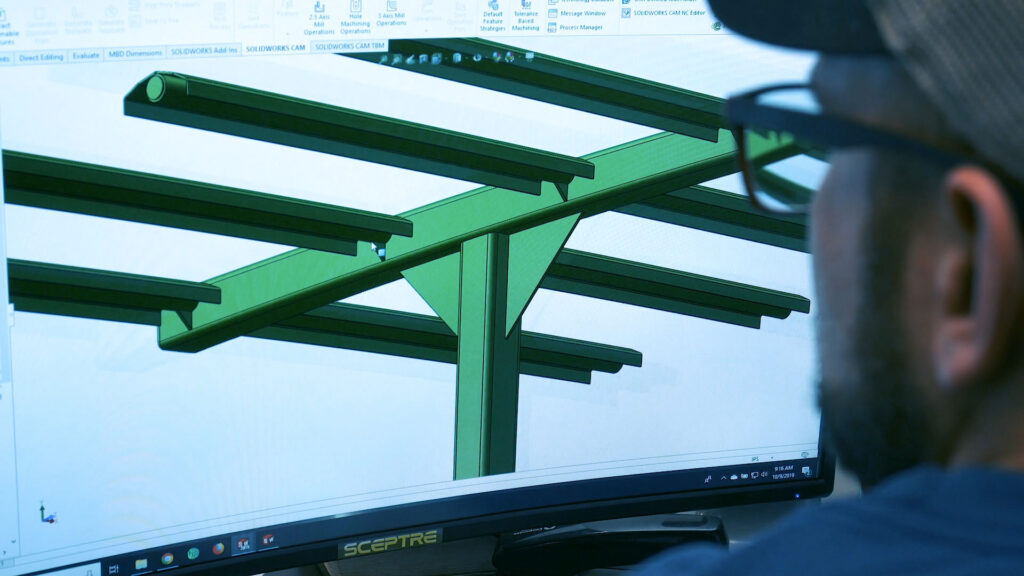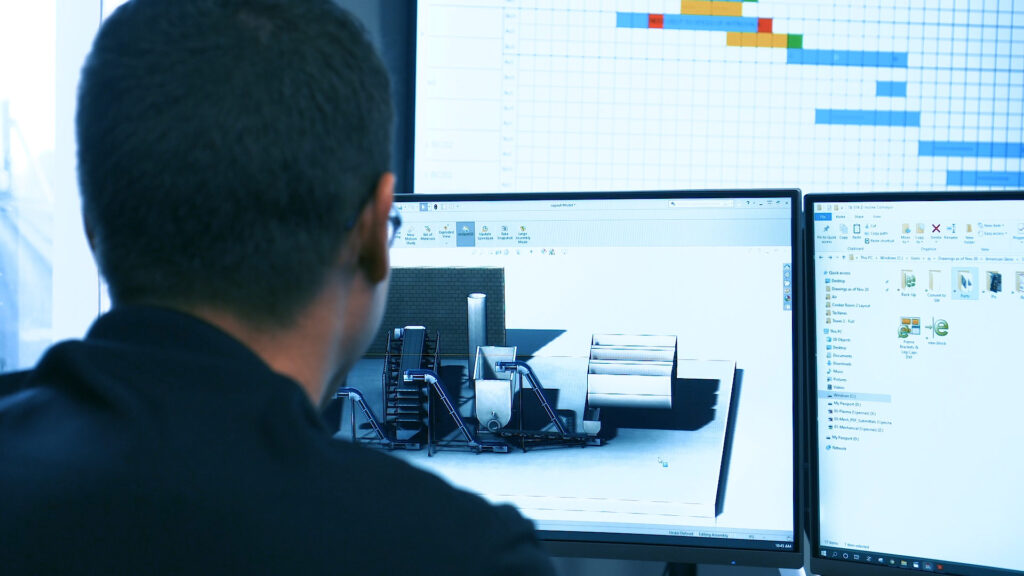
The engineering design process is a cyclical approach to problem-solving. This means that the process can be revisited at any point if the solution does not deliver a successful result. The design process is a series of steps that are meant to delve deeper into the root of the problem to get to a more effective and lasting solution.
Engineering teams from various disciplines can use the design process to resolve issues. The ability to revisit the process is also handy in terms of brainstorming future ideas and endeavors. The design process for engineers can be likened to SCRUM or think tanks for enterprises.
The design process is a series of steps that engineers follow and are generally standard across the board. Below, we will go into further detail about these steps and what they may look like in a real-world scenario.
1
This part of the engineering design project focuses on what needs to be done. At this point, engineers will decide on the construction that needs to take place and all the elements required to make the “what” part of the critical discussion possible. At this point, they determine whether the requests meet the requirements of the design process and whether it’ll be a good design.
During this phase of the process, engineers will take the totality of the project into account and include the problem that needs solving, who this needs to be solved for, and what is required for the optimal solution. This phase creates a necessary outline for the project, which the following phases fill out.
2
If this is a project that takes inspiration from another, then it’s important to talk to the team involved in that design process to compare notes, such as to apply science mathematics for a more accurate build.
Completely new ideas may need a larger group of experts to research the parameters and restrictions of the plan and to include valuable design processes such as applying the scientific method.
Engineers will also look at similar projects for potential risks and where others may have come across possible pitfalls, costly mistakes, or total failures. This is helpful in terms of adjusting the focus to areas that carry less risk or have more research to back it up.
This phase should also spell out the requirements for the project. This can include the timeframe, specifications of the design, materials used, work teams required, capital outlay, and if there are other challenges such as permits, licenses, proprietary information, patents, and other hurdles.
3
The engineering think tank gets to flex its creative muscles and brainstorm ideas while meeting the design requirements. During the ideation process, anything goes, and the more audacious, the better. Once the ideas are thrown in the ring, it’s time to sift through the most viable options that will maximize a return.
This phase also requires you to choose the idea that best suits the brief and preferences of the team. For instance, if this is a design project for an item or building, it needs to meet form and function requirements.
For problem-solving, it’s important to highlight what didn’t work before and improve or replace it. While this might be the creative part of the process, it’s important to still have guidelines and timelines in place to ensure you’re on track to reach the goals.
4
The planning process pares back the ideas to the bone. It marries these ideas with the goals in the “ask” portion of the process and the possible methods in the “imagine” phase. This part can be tricky as it’s important to know which ideas will result in a project that fits the client’s brief but is also safe, compliant, and achievable.
Planning is where all the math and science behind the project needs to be resolved to create a workable prototype. Measurements, scales, ratios, materials, and even gravity may all be factors worth considering before attempting to build or design products.
5
Engineers get to put their plans to paper by creating them. This can be a computerized rendering or physical model of the proposed project. For properties, this can be both the blueprints and scale models to represent the proposal.
Developers often have both ready for would-be investors. Another example is a prototype of the new motor to be used in machinery. This allows manufacturers and potential backers to see the product before it is developed.
6
This leg of the process allows engineers to crash-test their prototype and see if it works. During this phase, lots of revisiting can happen to the previous phases in the process. Testing is important as it lets engineers know whether their design will meet the needs of their clients.
Testing is also critical to determine the fatigue level of a new design. For instance, a new component in a machine will need to be tested extensively to ensure it meets the minimum standard for the industry.
7
The test and improvement steps of the design process often go together to find solutions to a problem. Improvement can happen at any part of the design process, but it helps when that process has been tested to apply potential solutions.
This phase can provide a structured approach to the next prototype, and improvements may rely on revisiting all the previous steps until a workable solution is found. It’s also in this phase where the results are discussed, and teams create a new ideation strategy.
Additionally, it’s worth noting that even if a solution meets the brief or solves a problem, there might be a better or more efficient way to get to this point. Discussing the solution and methods of achieving it allows teams to work on chipping away at anything that makes the design process sluggish or superfluous.
Efficiency relies on the fastest, most direct way to get to a solution. There should, however, be room for creativity and aesthetics if it doesn’t reduce the efficiency of the product. In a business, it’s possible that you’ll continuously apply the design, build, and test components to constantly evolve according to your client’s needs.

One of the major benefits of the design process is that it’s open-ended, allowing engineers to revisit previous steps during any part of the process. This freedom of movement creates a hybrid collaboration that is continuously growing and refining engineering solutions.
While this might require a greater effort of collaboration, the combination of ideas can promote creativity, which is an essential component of problem-solving. Collaboration also encourages communication, which allows the design process to flow more effectively.
At PEC, we provide clients with cost-effective solutions that deliver real, measurable process and performance improvement. Our approach to the design process allows us to streamline ideation for a solution-driven environment.
Your business deserves a fast response to new projects or existing problems, and the effective deployment of the design process allows just that. Let’s talk about possible solutions for your design process.